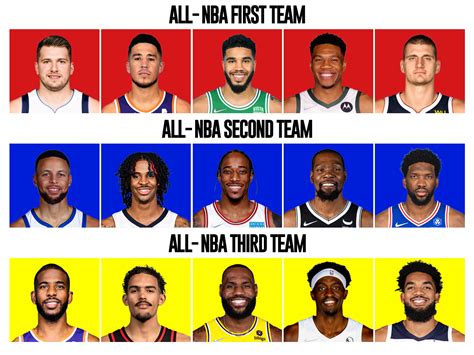
Julius Erving, the iconic “Dr. J,” has revealed his all-time NBA starting five, a lineup he confidently asserts would be unbeatable. Erving’s dream team consists of Oscar Robertson, Jerry West, Michael Jordan, Elgin Baylor, and Bill Russell, a roster brimming with scoring prowess, defensive tenacity, and championship pedigree.
Julius Erving, a legend in both the ABA and NBA, has ignited a fresh debate among basketball enthusiasts by unveiling his ultimate NBA starting lineup. In a recent interview, Dr. J presented his selections for the five greatest players of all time, assembling a team he believes would dominate any opponent across eras. His choices, steeped in history and reflecting a deep appreciation for the game’s evolution, have sparked both agreement and disagreement among fans and analysts alike.
Erving’s lineup is a testament to his profound understanding of basketball. It features a blend of playmaking, scoring, and defense rarely seen in a single unit. Oscar Robertson, the original triple-double threat, anchors the point guard position, bringing unparalleled court vision and versatility. Jerry West, the “Mr. Clutch” of the Los Angeles Lakers, provides scoring and defensive intensity at the shooting guard spot. Michael Jordan, widely considered the greatest basketball player ever, occupies the small forward position, promising unmatched offensive dominance and defensive excellence. Elgin Baylor, a high-flying marvel known for his incredible athleticism and scoring ability, is Erving’s choice at power forward. Finally, Bill Russell, the ultimate team player and defensive anchor with a record 11 NBA championships, completes the lineup at center.
“Put those guys on the court against anybody,” Erving emphatically stated. His confidence stems from the unique combination of skills and experience these players possess. Robertson’s playmaking, West’s clutch performances, Jordan’s unparalleled talent, Baylor’s athleticism, and Russell’s defensive leadership form a synergistic blend that Erving believes would be unstoppable.
Erving’s selections inevitably lead to comparisons with other all-time greats. Players like LeBron James, Kareem Abdul-Jabbar, Larry Bird, Magic Johnson, and Shaquille O’Neal, among others, are frequently included in discussions about the greatest NBA players of all time. The absence of these names from Erving’s starting five highlights the subjective nature of such debates and underscores the difficulty of comparing players across different eras.
The criteria for selecting an all-time lineup often vary among individuals. Some prioritize statistical achievements, while others emphasize championship success, individual accolades, or overall impact on the game. Erving’s choices appear to reflect a balance of these factors, with each player possessing a remarkable combination of individual brilliance and team success.
Oscar Robertson, often overshadowed by later generations of point guards, was a revolutionary player who redefined the position. “The Big O” averaged a triple-double for an entire season, a feat unmatched until Russell Westbrook replicated it decades later. His ability to score, rebound, and assist at an elite level made him a constant threat on the court.
Jerry West, the silhouette on the NBA logo, was renowned for his clutch performances and defensive tenacity. He led the Lakers to numerous NBA Finals appearances, showcasing his ability to perform under pressure. West’s scoring prowess and defensive intensity made him a valuable asset on both ends of the court.
Michael Jordan, arguably the greatest player in NBA history, needs little introduction. “His Airness” dominated the league for over a decade, leading the Chicago Bulls to six NBA championships. Jordan’s scoring ability, defensive prowess, and competitive drive set him apart from his peers.
Elgin Baylor, a high-flying marvel, was one of the most exciting players of his era. His incredible athleticism and scoring ability made him a constant threat to opposing defenses. Baylor’s performances were often spectacular, earning him widespread recognition as one of the game’s greatest players.
Bill Russell, the ultimate team player and defensive anchor, led the Boston Celtics to an unprecedented 11 NBA championships. His focus on defense, rebounding, and team play made him a transformative figure in the game. Russell’s leadership and selflessness were instrumental in the Celtics’ dynasty.
While Erving’s lineup emphasizes players from earlier eras, the debate over the greatest players of all time continues to evolve as new generations of talent emerge. Players like LeBron James, with his incredible all-around game, and Stephen Curry, with his revolutionary shooting ability, are constantly reshaping the landscape of the NBA.
The discussion of all-time lineups is a recurring theme in basketball, sparking endless debates and discussions among fans and analysts. Erving’s selections provide a fresh perspective on this topic, inviting viewers to consider the unique skills and accomplishments of the players he has chosen. His dream team is not simply a collection of individual talents; it is a carefully constructed unit designed to maximize its strengths and minimize its weaknesses.
The composition of Erving’s lineup highlights the enduring legacy of these players and their impact on the game. While basketball continues to evolve, the fundamental principles of teamwork, skill, and determination remain constant. Erving’s all-time starting five embodies these principles, representing the best of what the game has to offer.
In conclusion, Julius Erving’s all-time NBA starting five is a compelling statement about the greatest players in basketball history. His choices, based on a combination of skill, experience, and team success, provide a valuable perspective on the game’s evolution. Whether one agrees with his selections or not, the debate they ignite serves as a reminder of the enduring legacy of these players and their impact on the sport. Erving’s picks demonstrate a comprehensive understanding of the game, favoring a blend of scoring power, defensive prowess, and playmaking ability. He opted for a team he believes would be virtually unbeatable due to its exceptional balance and overall talent.
The reaction to Erving’s picks has been varied, with fans and analysts offering their own opinions and alternative lineups. Many agree with the inclusion of Michael Jordan, often regarded as the greatest basketball player of all time. However, some question the exclusion of more recent stars like LeBron James or the omission of dominant centers such as Kareem Abdul-Jabbar or Shaquille O’Neal. These discussions highlight the subjective nature of these debates and underscore the depth of talent that has graced the NBA throughout its history.
Comparing players across different eras is inherently challenging due to changes in rules, playing styles, and the overall athleticism of athletes. However, Erving’s selections provide a framework for considering the relative strengths and weaknesses of different players and teams. His lineup emphasizes the importance of versatility, defensive intensity, and leadership, qualities that transcend eras and remain essential to success in basketball.
The legacy of Julius Erving, both on and off the court, continues to inspire basketball fans around the world. His contributions to the game, both as a player and as an ambassador, have earned him a place among the sport’s greatest figures. Erving’s all-time starting five reflects his deep appreciation for the history of basketball and his commitment to recognizing the achievements of those who have helped shape the game.
The impact of Erving’s selections extends beyond mere debate. It encourages viewers to reflect on the evolution of basketball and to consider the criteria by which greatness is measured. His choices invite a deeper understanding of the game’s history and a greater appreciation for the players who have defined it.
The discussions surrounding Erving’s all-time starting five will undoubtedly continue for years to come. As new generations of talent emerge, the debate over the greatest players of all time will evolve. However, the legacy of the players selected by Erving will endure, inspiring future generations of basketball fans and players.
Expanded Analysis
To delve deeper into Erving’s selections, it’s crucial to examine the specific attributes each player brought to the court and how they complemented each other.
-
Oscar Robertson: Robertson’s selection as the point guard is based on his unprecedented all-around game. In an era where point guards were primarily facilitators, Robertson revolutionized the position with his ability to score, rebound, and pass at an elite level. His court vision was exceptional, allowing him to orchestrate the offense and find open teammates with ease. Furthermore, his physical strength and rebounding ability made him a dominant force on the boards. Robertson’s triple-double season remains one of the most remarkable achievements in NBA history, showcasing his versatility and overall impact on the game. In Erving’s lineup, Robertson would be responsible for initiating the offense, controlling the tempo, and distributing the ball to his talented teammates. His scoring ability would also provide a valuable offensive weapon, forcing opposing defenses to account for his presence.
-
Jerry West: West’s inclusion as the shooting guard is a testament to his clutch performances and defensive intensity. Known as “Mr. Clutch,” West consistently delivered in high-pressure situations, hitting game-winning shots and making crucial plays down the stretch. His scoring prowess was undeniable, as he averaged over 27 points per game throughout his career. However, West was also a tenacious defender, known for his ability to disrupt opposing offenses and create turnovers. In Erving’s lineup, West would provide a reliable scoring option, a defensive presence, and a clutch performer who could be counted on in critical moments. His experience and leadership would also be invaluable assets to the team.
-
Michael Jordan: Jordan’s selection as the small forward is almost universally accepted, given his status as arguably the greatest basketball player of all time. Jordan’s combination of scoring ability, defensive prowess, and competitive drive was unmatched. He led the Chicago Bulls to six NBA championships, showcasing his dominance and ability to elevate his teammates. Jordan’s scoring ability was legendary, as he could score from anywhere on the court with unparalleled efficiency. His defensive intensity was equally impressive, as he was a perennial All-Defensive Team selection. In Erving’s lineup, Jordan would be the primary scoring option, the defensive stopper, and the undisputed leader of the team. His presence alone would instill fear in opposing defenses and inspire his teammates to perform at their best.
-
Elgin Baylor: Baylor’s selection as the power forward is a nod to his incredible athleticism and scoring ability. Baylor was one of the most exciting players of his era, known for his high-flying dunks and acrobatic moves. He averaged over 27 points per game throughout his career, showcasing his offensive versatility. Baylor’s athleticism allowed him to dominate on the boards and create scoring opportunities for himself and his teammates. In Erving’s lineup, Baylor would provide a dynamic scoring presence, a rebounding force, and an exciting element that would captivate fans. His ability to score in a variety of ways would make him a difficult matchup for opposing defenses.
-
Bill Russell: Russell’s inclusion as the center is a testament to his unparalleled team success and defensive leadership. Russell led the Boston Celtics to an unprecedented 11 NBA championships, showcasing his ability to elevate his teammates and create a winning culture. His focus on defense, rebounding, and team play made him a transformative figure in the game. Russell’s leadership was instrumental in the Celtics’ dynasty, as he inspired his teammates to sacrifice individual glory for the sake of team success. In Erving’s lineup, Russell would be the defensive anchor, the rebounding specialist, and the ultimate team player. His leadership and selflessness would be invaluable in creating a cohesive and winning unit.
The synergy between these five players is what makes Erving believe this team would be unbeatable. Robertson’s playmaking would create scoring opportunities for West, Jordan, and Baylor. Jordan’s scoring dominance would draw double-teams, opening up opportunities for his teammates. Baylor’s athleticism would provide a dynamic element that would keep opposing defenses off balance. And Russell’s defensive presence would anchor the team and protect the basket.
Counterarguments and Alternative Lineups
Despite the impressive credentials of Erving’s selections, it’s inevitable that some will disagree with his choices. Critics may argue that the lineup is too guard-heavy, lacking size and strength in the frontcourt. Others may point to the absence of more recent stars like LeBron James or Kareem Abdul-Jabbar.
One potential alternative lineup could feature Magic Johnson at point guard, Michael Jordan at shooting guard, LeBron James at small forward, Larry Bird at power forward, and Kareem Abdul-Jabbar at center. This lineup would combine playmaking, scoring, and rebounding at an elite level, with a more balanced frontcourt.
Another alternative lineup could feature Stephen Curry at point guard, Michael Jordan at shooting guard, Scottie Pippen at small forward, Dennis Rodman at power forward, and Hakeem Olajuwon at center. This lineup would emphasize defensive intensity, with Curry providing a scoring threat and Olajuwon anchoring the defense.
Ultimately, the selection of an all-time starting five is a subjective exercise that depends on individual preferences and priorities. Erving’s selections reflect his deep appreciation for the history of basketball and his belief in the importance of skill, experience, and team success. While others may have different opinions, his lineup provides a valuable perspective on the greatest players in NBA history.
The Legacy of the Selected Players
The players selected by Erving have left an indelible mark on the game of basketball. Their achievements, both on and off the court, have inspired generations of players and fans.
-
Oscar Robertson: Robertson’s impact on the game extends beyond his statistical achievements. He was a pioneer for player empowerment, advocating for better salaries and working conditions. His legacy as a player and an advocate continues to inspire athletes today.
-
Jerry West: West’s contributions to the game extend beyond his playing career. He has served as a coach, general manager, and executive, helping to build championship-winning teams. His legacy as a basketball mind is unparalleled.
-
Michael Jordan: Jordan’s impact on the game is immeasurable. He transcended basketball, becoming a global icon and inspiring millions with his competitive drive and unwavering pursuit of excellence. His legacy as a player, businessman, and role model will endure for generations.
-
Elgin Baylor: Baylor’s legacy as a player is often overshadowed by his contemporaries, but his incredible athleticism and scoring ability should not be forgotten. He was one of the most exciting players of his era and paved the way for future generations of high-flying athletes.
-
Bill Russell: Russell’s impact on the game extends beyond his 11 NBA championships. He was a vocal advocate for social justice and used his platform to fight for equality. His legacy as a player, leader, and activist continues to inspire.
In conclusion, Julius Erving’s all-time NBA starting five is a compelling tribute to the greatest players in basketball history. His selections, based on skill, experience, and team success, provide a valuable perspective on the game’s evolution. While opinions may vary, the legacy of these players will endure, inspiring future generations of basketball fans and players. The lineup he presented is a mix of individual brilliance and collective success, reflecting Erving’s deep understanding of the game and his appreciation for its history.
FAQ: Dr. J’s All-Time NBA Lineup
1. Why did Dr. J choose these particular five players for his all-time lineup?
Dr. J selected Oscar Robertson, Jerry West, Michael Jordan, Elgin Baylor, and Bill Russell based on their unique combination of skills, experience, and team success. He believes that this lineup offers a perfect blend of scoring, playmaking, defense, and leadership, making them virtually unbeatable.
2. What criteria did Dr. J use to select his all-time starting five?
Dr. J considered a variety of factors, including individual skill, statistical achievements, championship success, and overall impact on the game. He emphasized the importance of versatility, defensive intensity, and leadership in his selections.
3. Why are more recent NBA stars like LeBron James or Kareem Abdul-Jabbar not included in Dr. J’s lineup?
The absence of more recent stars highlights the subjective nature of these debates. Dr. J’s choices reflect his personal preferences and his appreciation for the players who shaped the game in earlier eras. While LeBron James and Kareem Abdul-Jabbar are undoubtedly among the greatest players of all time, Dr. J’s lineup emphasizes a different set of skills and attributes.
4. How would Dr. J’s all-time starting five fare against other potential all-time lineups?
Dr. J is confident that his lineup would be unbeatable against any opponent, regardless of era. He believes that the unique combination of skills and experience possessed by these five players would make them a formidable force on both ends of the court. However, matchups against other potential all-time lineups would undoubtedly be competitive and would depend on a variety of factors, including coaching strategies and individual performances.
5. What is the significance of Dr. J revealing his all-time NBA lineup?
Dr. J’s selections provide a fresh perspective on the debate over the greatest players in NBA history. His choices invite viewers to consider the unique skills and accomplishments of the players he has chosen and to reflect on the evolution of basketball over time. The debate sparked by his lineup serves as a reminder of the enduring legacy of these players and their impact on the sport.









